Introduction
In the dynamic world of retail, the importance of an eCommerce web application cannot be overstated. By developing an eCommerce platform, businesses unlock a multitude of benefits that go beyond a mere digital storefront. Increased accessibility and enhanced customer experience are just the tip of the iceberg.
An eCommerce application enables businesses to reach a global audience, providing 24/7 service and facilitating seamless navigation for users. The integration of advanced technologies, such as data analytics, allows for in-depth insights into customer behavior, driving informed decision-making and boosting overall efficiency.
Data analytics plays a pivotal role in understanding consumer personas and purchasing habits, enabling retailers to tailor their strategies effectively. By analyzing data, businesses can identify successful tactics in preventing customer churn and basket abandonment, ensuring a refined approach to customer retention. The rise of all-in-one platforms further revolutionizes the retail sector by integrating various management systems into a single, cohesive interface.
This approach not only streamlines operations but also enhances operational efficiency and provides a unified view of the business.
IoT and data analytics are transforming retail management, making it more effective and insightful. The development of eCommerce web applications is thus a strategic move towards leveraging technology to foster customer satisfaction and drive business growth. By adopting advanced technologies and comprehensive platforms, businesses can maintain a competitive edge in a rapidly evolving market.
Benefits of Developing an eCommerce Web Application
Developing an eCommerce web application provides numerous benefits, including improved accessibility and elevated customer satisfaction to more efficient operations. By utilizing a dedicated platform, businesses can expand their reach to a global audience and provide 24/7 service. This approach not only facilitates easy navigation for users but also leverages data science to gain deeper insights into customer behavior.
The integration of data analytics within eCommerce platforms allows retailers to mine vast amounts of data, uncovering actionable insights that can inform decision-making processes. This data helps retailers understand consumer personas, purchasing habits, and the effectiveness of various marketing channels. For instance, insights drawn from data can identify which prompts and steps are effective in preventing customer churn and basket abandonment.
Moreover, the rise of all-in-one platforms is revolutionizing the retail sector by integrating various management systems into one seamless interface. This holistic approach enhances operational efficiency and provides a unified view of the business, leading to better decision-making and improved customer experiences. The use of IoT and data analytics further supports this transformation, enabling retailers to manage their operations more effectively.
In conclusion, the development of eCommerce websites is not just about creating a digital storefront; it's about leveraging advanced technologies to enhance customer satisfaction and drive business growth. By integrating data science and adopting all-in-one platforms, businesses can stay competitive in the rapidly evolving retail landscape.
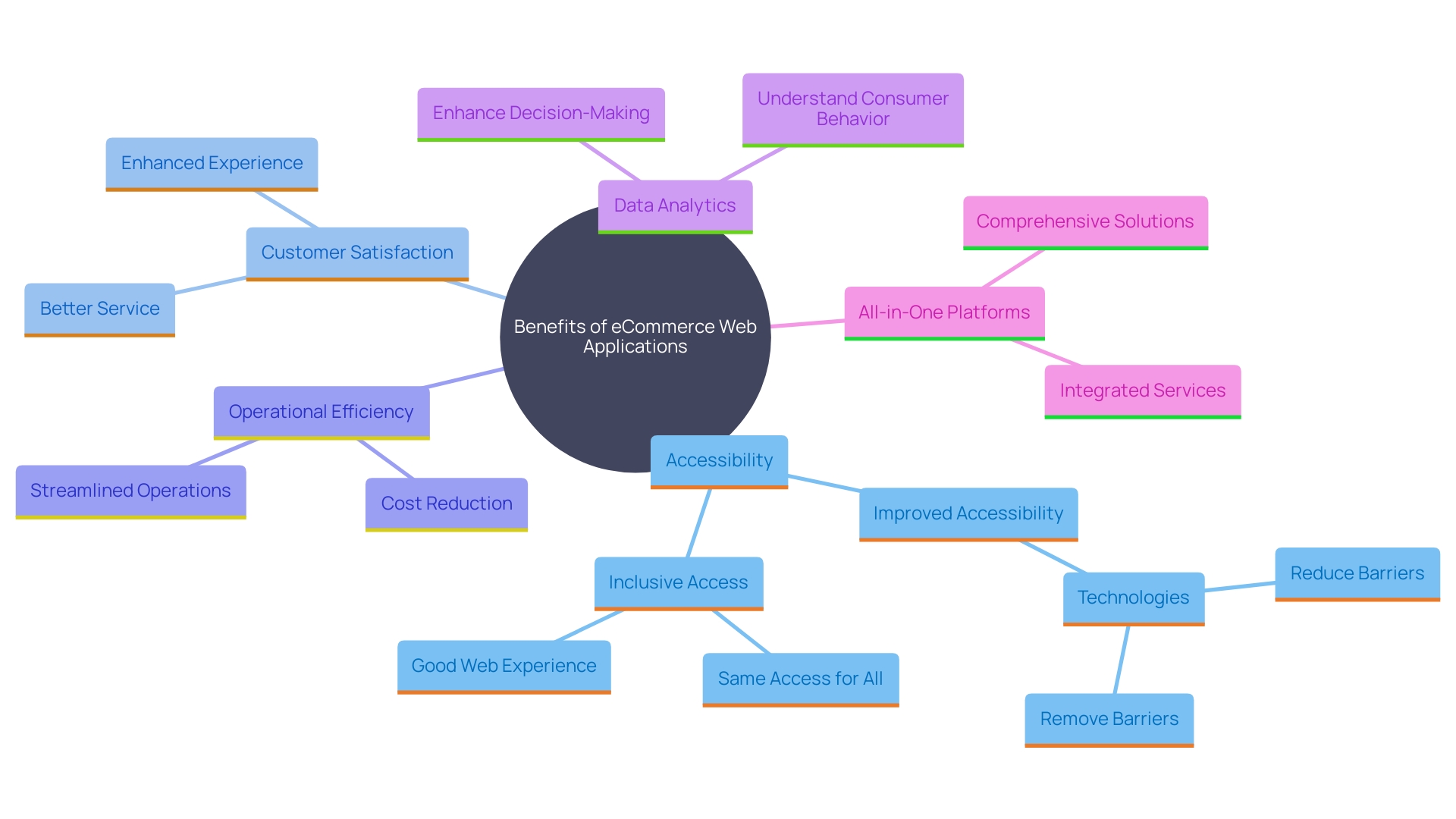
Step-by-Step Guide to eCommerce Web Application Development
Developing an eCommerce web application involves several critical steps, each essential for ensuring a successful launch and continuous improvement. The initial planning phase is fundamental. It sets the stage by defining the website's goals, understanding the target audience, and outlining the necessary features. This stage is crucial as it determines the website's structure and the resources required for development.
Next, the design and development phase begins. This involves creating a user-friendly interface and ensuring that the website is responsive across various devices. It is essential to use HTML for writing digital files, with web pages connected through hyperlinks and hypertext. These pages must be hosted on servers that are always online, allowing global access. This hosting aspect is critical, as it ensures that the eCommerce site remains accessible to users at all times.
After development, thorough evaluation is carried out to identify and resolve any bugs or issues. This encompasses software evaluation to guarantee that the program operates seamlessly and fulfills the specified criteria. Continuous testing and quality assurance are vital to maintaining the site's performance and stability.
Once the application is live, ongoing maintenance is necessary to keep it up-to-date and secure. This includes regular updates, performance monitoring, and implementing new features based on customer feedback and market trends. For instance, Crew Clothing, a UK retailer, demonstrated the importance of a unified platform for connecting data and gaining insights, which can be applied to eCommerce sites to enhance their functionality and user engagement.
Additionally, it is important to consider the scalability of the software. As the business grows, the eCommerce platform should be able to handle increased traffic and transactions without compromising performance. This was highlighted by the experience of small businesses that often need to upgrade their hosting plans as their online presence expands.
In summary, developing an eCommerce web platform requires meticulous planning, robust design and development, thorough testing, and continuous maintenance. By following these steps, businesses can ensure a smooth launch and ongoing success of their eCommerce platforms.
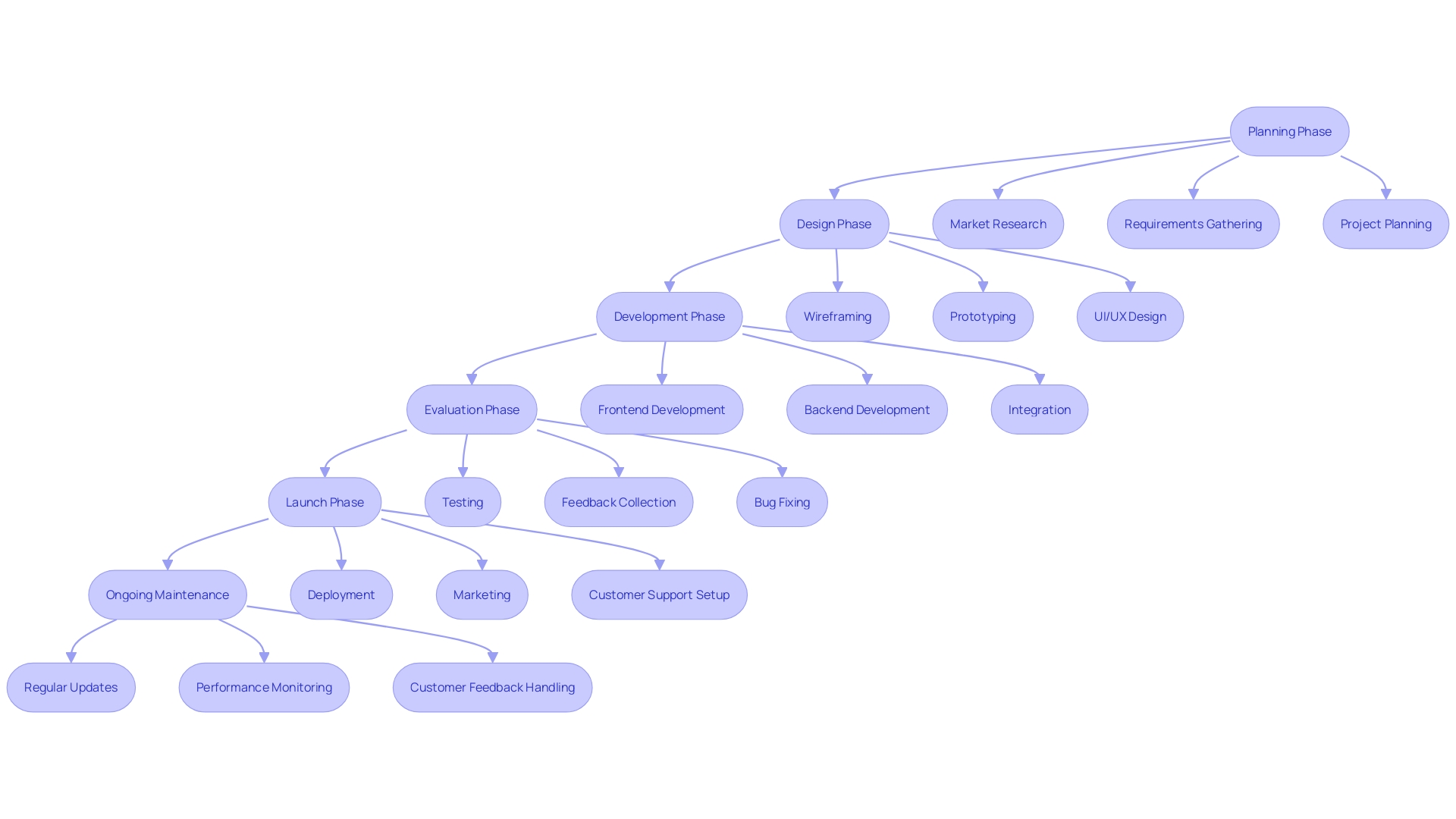
Planning Your eCommerce Web Application
Effective planning is the cornerstone of successful eCommerce software development. This comprehensive phase involves defining the project scope, budget, and timeline, while also establishing a clear vision for the software. The initial step is to understand the development needs, which includes identifying the purpose and scope of the software. Whether the platform will be a website, mobile, or cross-browser significantly influences the technologies and development approach.
Planning also entails a detailed understanding of the key features required in the program. For instance, an eCommerce platform typically includes customer registration and login functionalities, address management, and features like wishlists, order tracking, and shopping carts. Categories and sub-categories for products need to be well-defined, each with detailed descriptions. Product information is critical, encompassing names, descriptions, prices, summaries, and images. Additionally, products may have various attributes such as sizes and colors, each potentially affecting the pricing structure.
Given the complexity and variety of features, it is essential to choose the right software for development. Factors such as scalability, security, and user experience must be considered. For instance, Ext JS could be a viable choice for robust and responsive software development. Furthermore, advanced-level concepts like server-client models and HTTP/HTTPS protocols should be integrated to ensure seamless communication between the server and client.
Incorporating these elements during the planning phase ensures that the eCommerce application is not only functional but also scalable and user-friendly, providing a solid foundation for future growth.
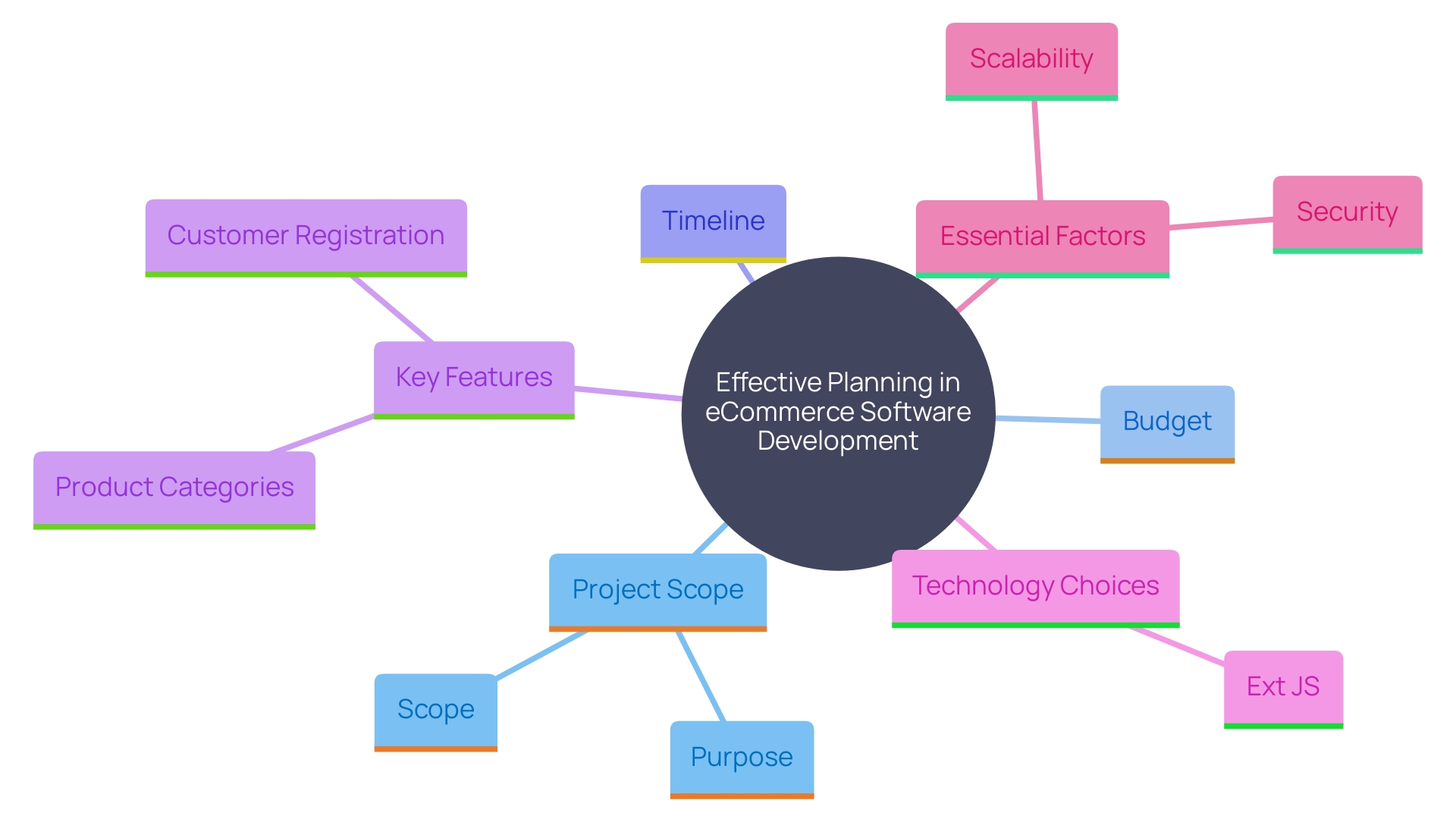
Defining Your Goals
Setting specific, measurable goals is crucial for steering your development process effectively. Begin by understanding what you want your app to achieve and how it will cater to your target audience. Conduct thorough market research to gather insights into consumer preferences, market trends, and competitor analysis. This will assist in forming the app roadmap and guaranteeing the creation of features that genuinely connect with your audience.
Set clear goals such as boosting sales, improving customer engagement, or expanding market reach. For instance, by examining rivals and pinpointing market gaps, you can customize your app to fill these voids, thereby drawing a larger audience. Collecting insights through surveys, focus groups, or interviews can uncover pain points and preferences, allowing you to create functionalities that address these needs.
Creating a detailed development plan involves mapping out technical requirements, development stages, and dependencies. This structured approach keeps the team aligned and focused on the key milestones necessary for successful project execution. By establishing measurable objectives and consistently tracking progress, you can guarantee that your app not only meets but surpasses expectations, ultimately fostering growth and success.
![]()
Identifying Your Target Audience
Understanding your customers is fundamental to your e-commerce success. Conducting targeted market research is essential to identify key demographics, preferences, and pain points. This research allows you to customize your application effectively to meet their needs.
Organizations have long relied on consumer research to delve into what influences buying behaviors. However, a study by 84.51° reveals that many companies base decisions on flawed data due to unreliable self-claimed surveys. This highlights the importance of using behaviorally-verified surveys for accurate insights.
Data science has transformed how e-commerce companies comprehend customer interactions. By analyzing data from various touchpoints, companies can create detailed consumer personas and understand purchasing habits. This data-driven approach helps in strategically targeting new and existing customers, reducing operational costs, and improving conversion rates.
For instance, føtex's autonomous store in Aarhus, Denmark, powered by AiFi technology, demonstrates how innovative solutions can enhance customer satisfaction and operational efficiency. Such advancements underscore the importance of staying abreast of technological trends to maintain a competitive edge.
To gather meaningful insights, consider exploratory and descriptive research methods. These involve open-ended interviews, focus groups, and surveys to capture detailed market trends and customer behaviors. Such comprehensive research helps in identifying market opportunities and potential challenges, ensuring your offerings align with future demands.
By utilizing precise information and remaining knowledgeable about market developments, you can enhance your e-commerce platform to provide an exceptional interaction, thus promoting growth and customer contentment.
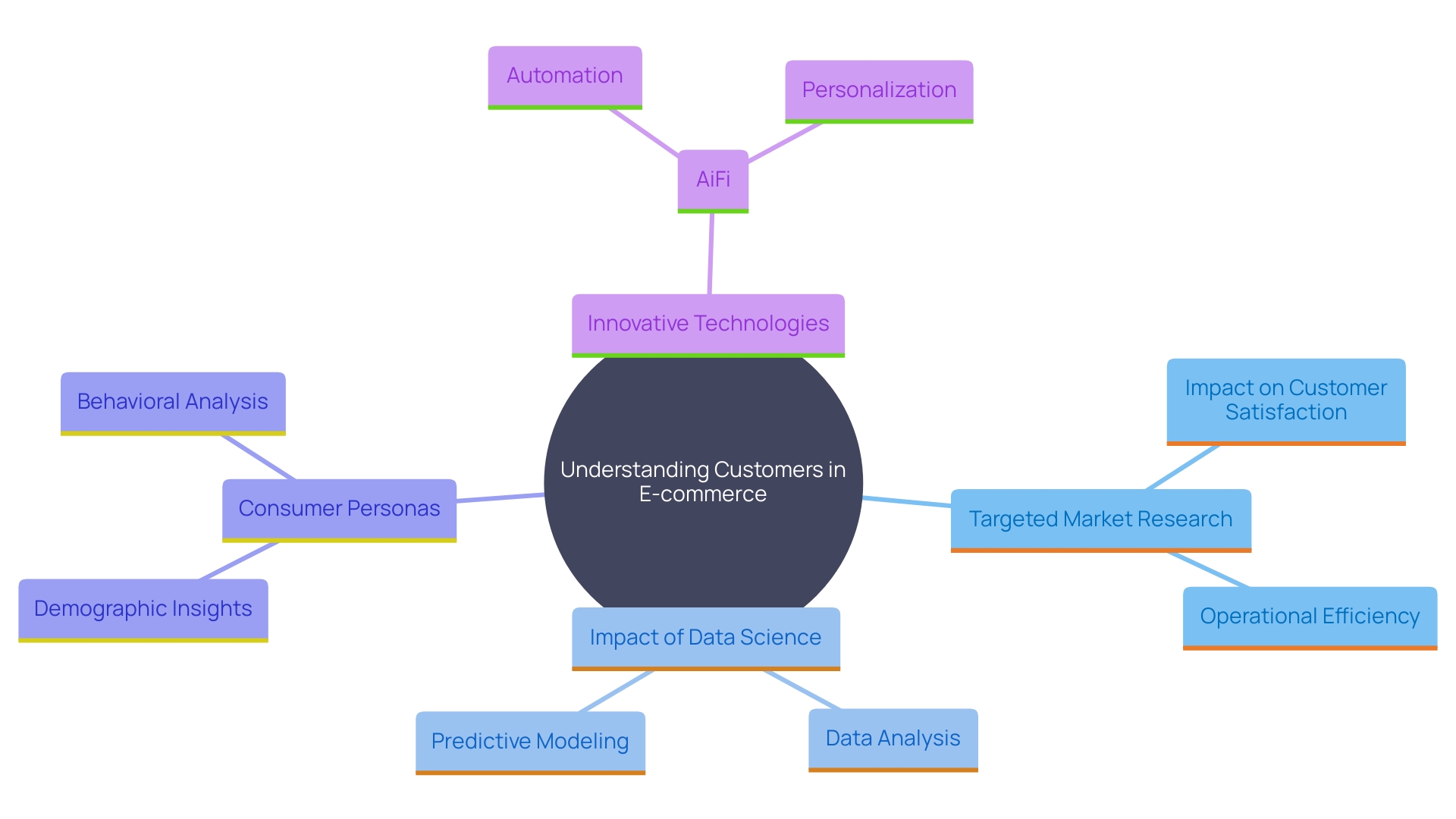
Choosing the Right eCommerce Platform
Choosing the right eCommerce platform is paramount to your project's success. The ideal platform should align with your business model, scalability requirements, and budget. For instance, Shopify has emerged as a leader in digital commerce, powering over a half trillion dollars in global commerce and driving revenue for millions of merchants in more than 175 countries. Its speed, flexibility, and scalability make it a preferred choice for many large and complex businesses. When deciding, consider the main goals and functionalities you need on both the front end and the back end. Assess your development expertise, team capabilities, and budget to determine whether a traditional SaaS tool, a headless commerce tool, or an open-source solution is best suited for your needs. Remember, platforms play a crucial role in today's global economy, and finding the right one can significantly impact your online success.
Popular eCommerce Platforms (e.g., Shopify, Magento, WooCommerce)
When selecting an e-commerce platform, it's crucial to evaluate them based on features, user-friendliness, and support. Shopify, for example, stands out for its simplicity and efficiency, making it a favorite among many global merchants. With the ability to quickly set up an online store, Shopify has powered over a half trillion dollars in global commerce and is trusted by millions of merchants in more than 175 countries. Its speed, flexibility, and scalability make it an ideal choice for businesses looking to grow rapidly.
Magento, on the other hand, offers extensive customization options, making it suitable for businesses that require a highly tailored e-commerce solution. Its open-source nature allows for deep modifications, enabling businesses to create distinctive online interactions. This flexibility, however, often requires more technical expertise compared to other platforms.
WooCommerce is perfect for those already familiar with WordPress. It integrates seamlessly with WordPress sites, offering robust e-commerce functionalities within the familiar WordPress environment. It's also open-source, providing flexibility for customization and a large community of developers to support and enhance the platform.
Choosing the right platform depends on your specific business needs. Whether you prioritize ease of use, customization capabilities, or integration with existing systems, there's a platform that can meet your requirements.
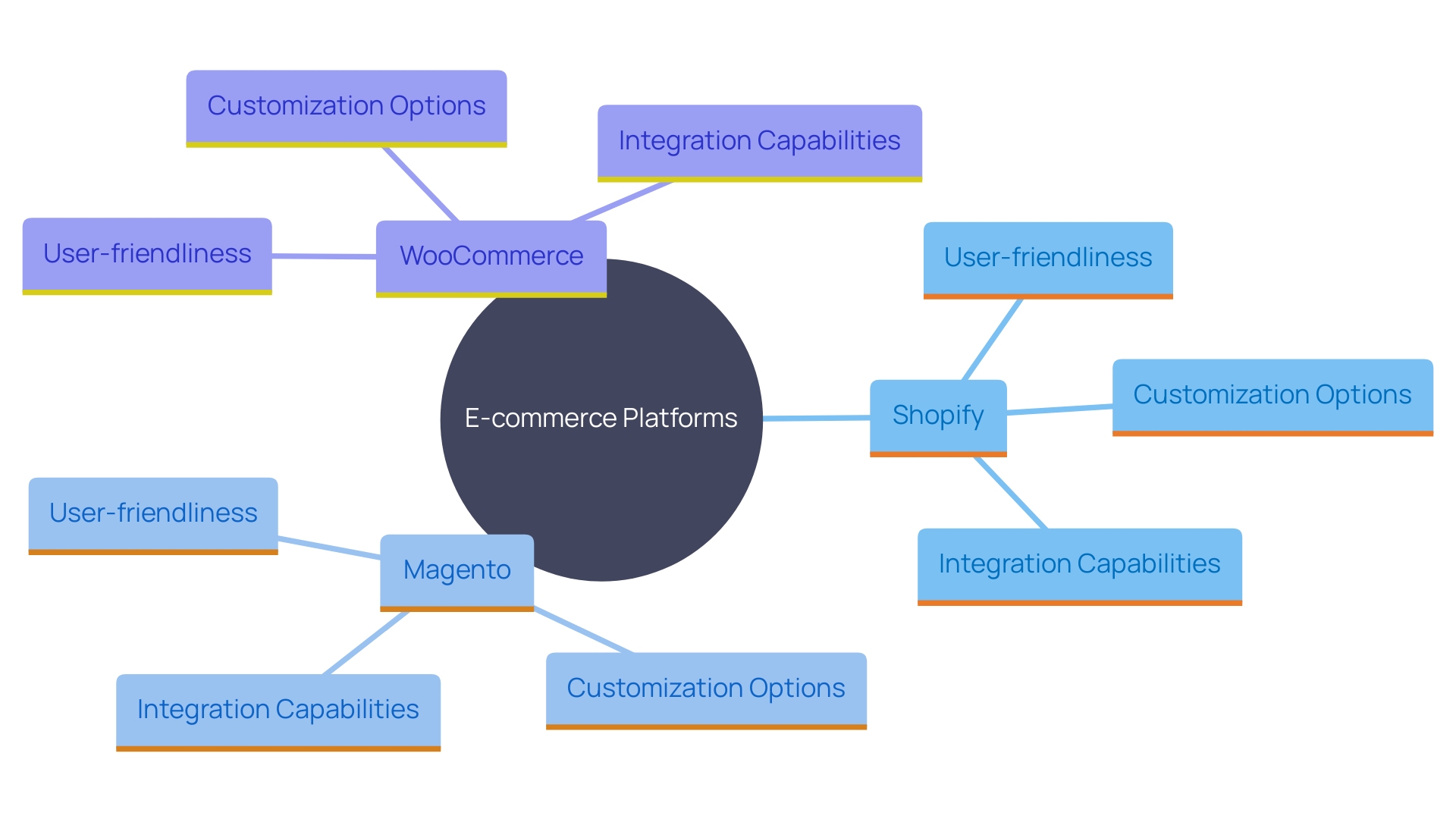
Designing Your eCommerce Web Application
'Design is crucial in influencing consumer interaction, particularly in the field of e-commerce.'. A well-crafted interface not only attracts customers but also fosters a seamless journey from browsing to purchasing, significantly impacting conversion rates. In fact, studies show that mobile sites loading in two seconds or less enjoy a 15% higher conversion rate than their slower counterparts.
Ripley's approach to developing their mobile app for customers in Chile and Peru exemplifies the importance of user-centric design. The project, initiated with a week of Lean Inception, focused on creating a product that allowed quick, easy, and reliable shopping experiences from anywhere. This client-focused methodology, underscored by thorough research, ensured the app met the needs of mobile individuals, who represent a significant portion of web traffic today.
Moreover, the significance of mobile UX in retaining customer interest cannot be overstated. Over half of online shoppers are less likely to purchase from a brand with a poorly designed mobile site, highlighting the critical role design plays in e-commerce success. As Numiko's group of web designers observes, current trends like dynamic layouts and animated text are not only visually appealing but also improve engagement and satisfaction.
In the competitive landscape of e-commerce, a well-designed application is more than just an aesthetic asset—it is a crucial component that fosters loyalty and business growth. By prioritizing simplicity and usability, businesses can create digital environments that not only attract but also retain and engage individuals effectively.
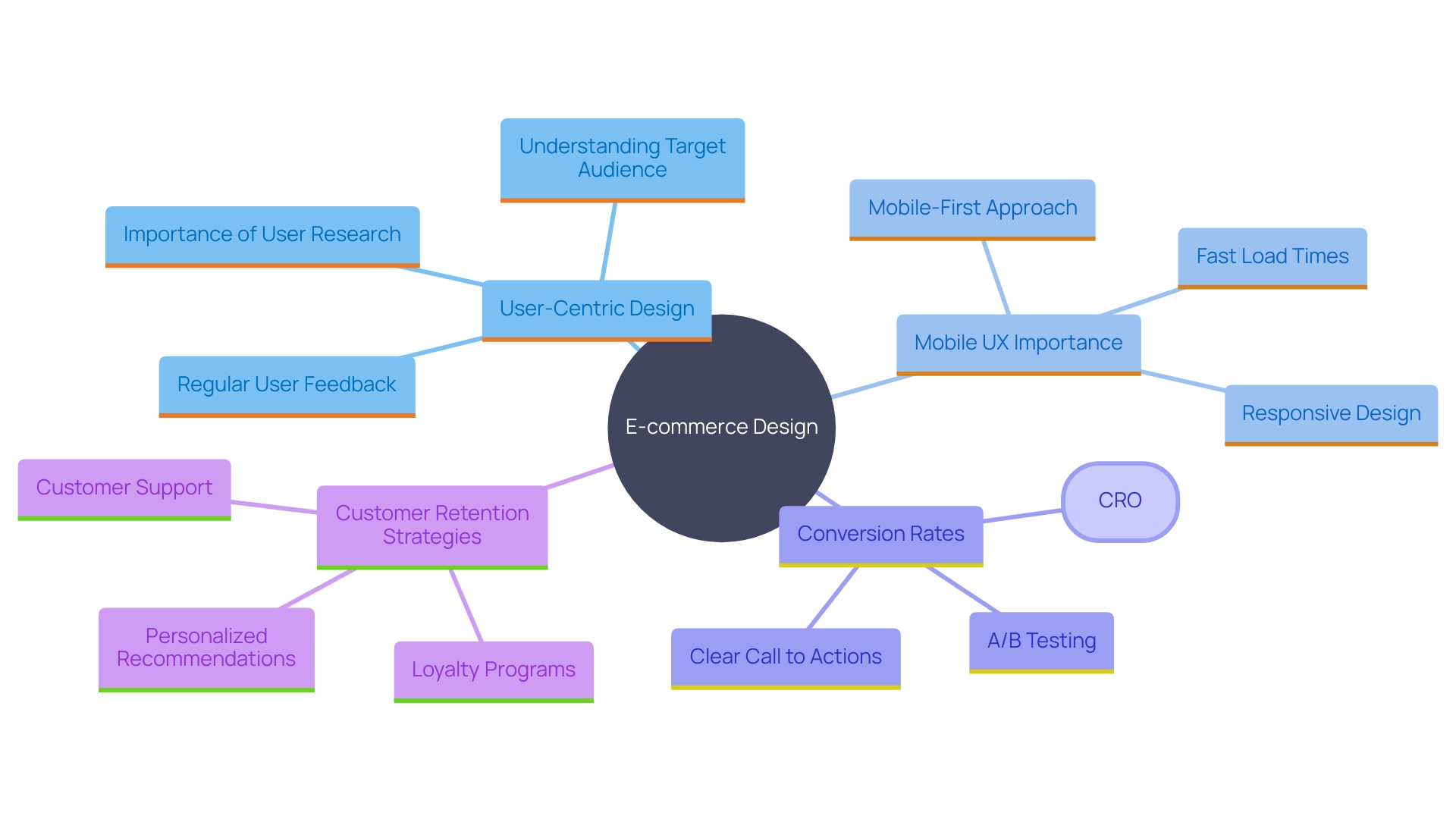
Creating a User-Friendly Interface
Creating an intuitive and visually appealing interface is the cornerstone of a successful e-commerce platform. High Voltage Trading (HVT), a leading European asset management firm, understood this when they partnered with The Reach to redefine their brand identity. This collaboration focused on consistent branding, clear navigation menus, and responsive design, elements crucial for enhancing usability across devices.
Responsive design is crucial in today’s digital environment, where individuals access websites from a myriad of devices, from smartphones and tablets to desktops and laptops. This approach ensures that a website’s layout and content adapt fluidly to various screen sizes and orientations, providing a seamless experience for visitors. According to recent statistics, over 50% of people will not consider purchasing from a brand with a poorly designed mobile site, and mobile sites loading in two seconds or less have a 15% higher conversion rate than average sites.
The success of platforms like Airbnb, which utilized design principles centered around individuals, highlights the significance of concentrating on the needs and behaviors of clients. Conducting research through surveys, interviews, and usability tests, as well as creating detailed personas and mapping out journeys, are fundamental steps in the design process. This individual-focused approach ensures that participants can achieve their objectives with minimal resistance, leading to higher engagement and satisfaction.
Recent trends in web design, as identified by agencies like Numiko, emphasize the importance of innovative layouts and the integration of elements like 3D, UI, motion design, and photography. These trends, along with the use of generative AI to boost creativity, are changing the digital landscape, making it more immersive and interactive.
In summary, a well-designed interface that prioritizes client satisfaction, employs responsive design, and incorporates the latest trends, is critical for any business aiming to thrive in the digital age. As evidenced by the success stories of firms like HVT and platforms like Airbnb, these principles are not just beneficial but necessary for achieving outstanding results.
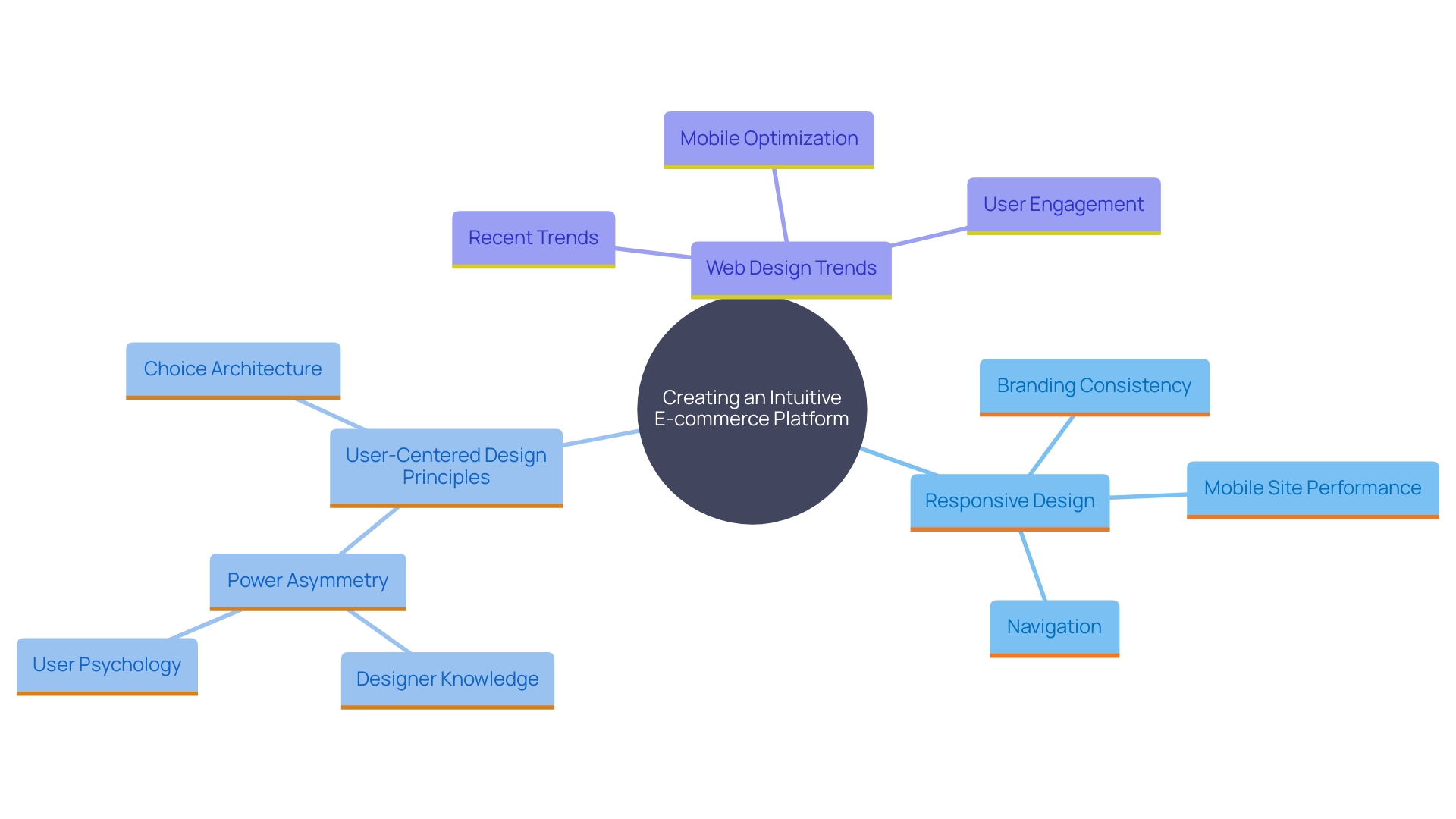
Essential Features (e.g., Search Bar, Product Pages, Shopping Cart)
Integrate a robust search bar, meticulously organized product pages with crisp, fast-loading images, and a streamlined shopping cart to enhance transaction ease. High-quality images are crucial, as they are the first thing shoppers notice, driving them to explore and purchase more products. However, balancing image quality with website loading speed is essential. Adopt techniques that ensure images load quickly without compromising clarity. The website should not only showcase products effectively but also convey your brand's vision and culture, creating an engaging atmosphere that aligns with your long-term objectives. Utilize advanced strategies inspired by product marketing and SaaS startups to keep your site engaging. Current eCommerce trends emphasize the importance of a seamless mobile experience, as over 50% of individuals will abandon a brand due to a poorly designed mobile site. Prioritize performance and speed, as mobile sites loading in two seconds or less have a 15% higher conversion rate. By focusing on these elements, you can significantly enhance user engagement and drive sales.
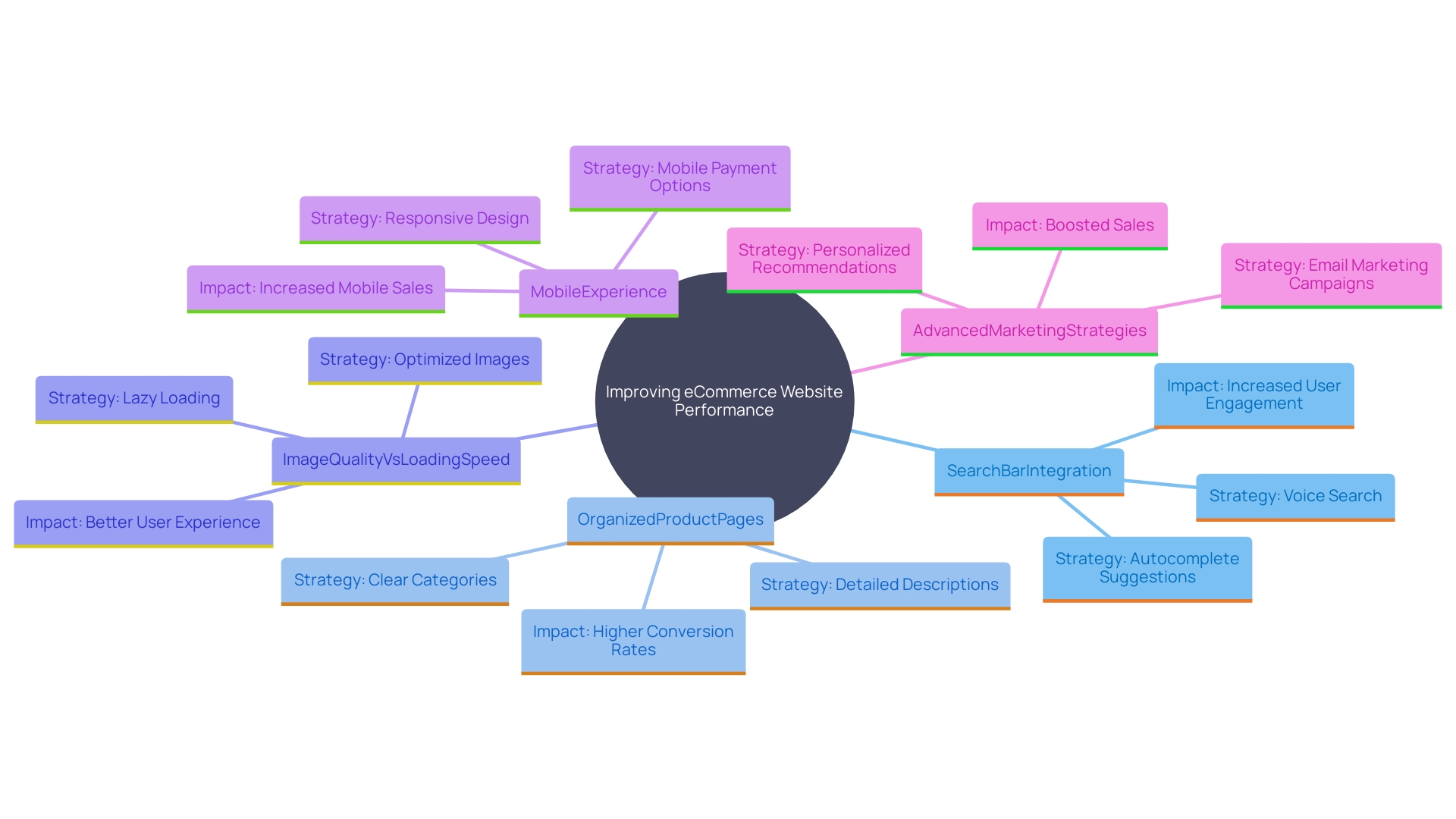
Developing Your eCommerce Web Application
The development phase is a pivotal stage where your designs are transformed into a fully functional software. It is essential to select the right technologies to support your goals effectively. Understanding your development needs is the initial step. This involves identifying whether your software will be a website, mobile, or cross-browser, as each requires different technologies. For instance, Ext JS is an excellent choice for data-intensive cross-platform web solutions.
Choosing the appropriate development software is critical. Key considerations include the technical requirements and features needed to meet your project's purpose and scope. For example, if your goal is to create a website that provides information and solutions while encouraging interaction, you must ensure that your hosting environment is reliable and always online. This means leveraging web servers that keep your site accessible globally.
Moreover, advanced-level concepts such as responsive design, scalability, and security should not be overlooked. Given the dynamic nature of the e-commerce landscape, your software must be adaptable and robust to handle the evolving demands of users. By ensuring these elements are addressed, you lay a strong foundation for a successful and sustainable e-commerce platform.
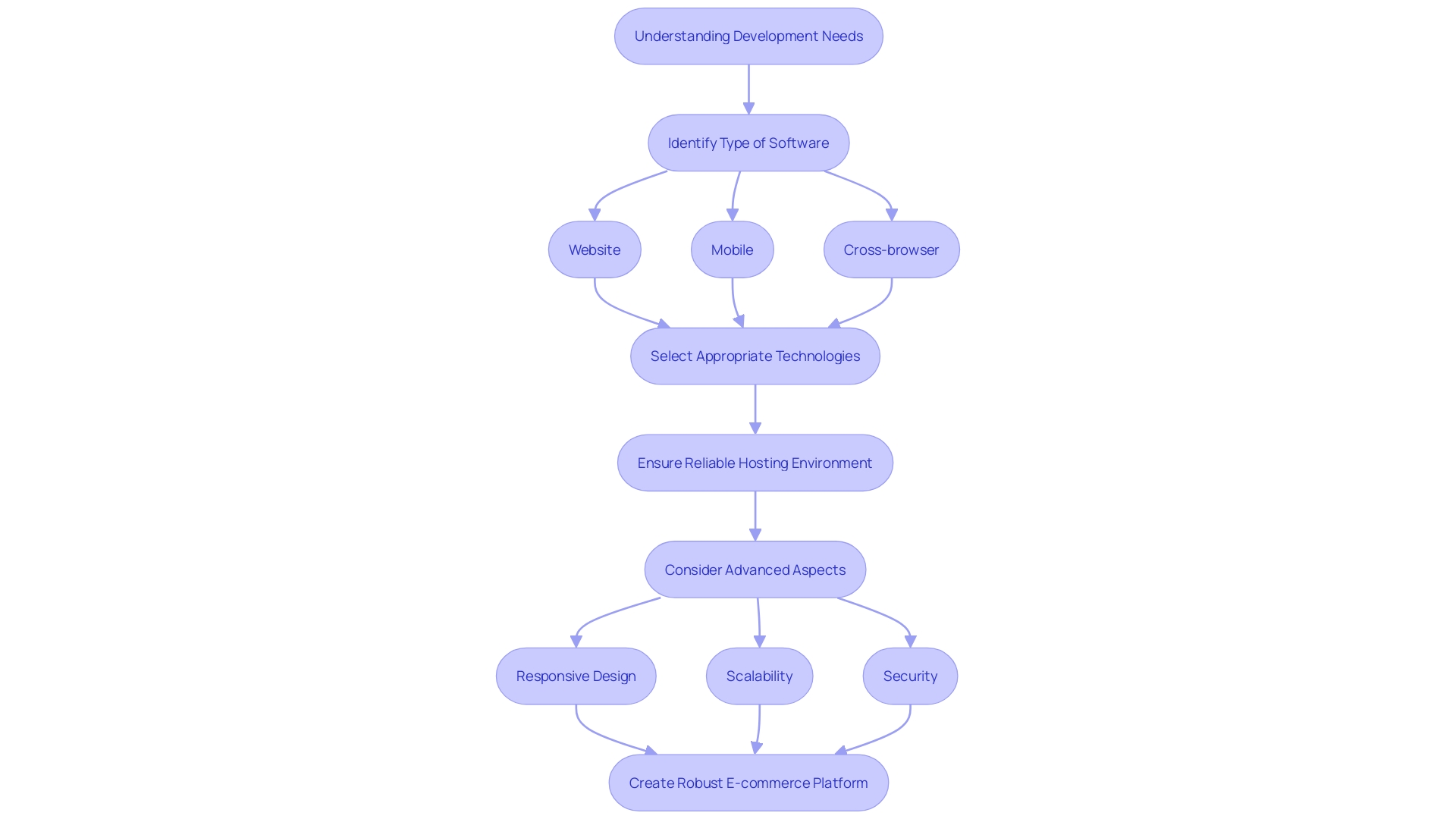
Selecting the Right Technology Stack (e.g., React, Angular, Node.JS)
Choosing the appropriate technology stack is essential for creating a strong and scalable system. A tech stack, often called a solutions stack, is a combination of programming languages, frameworks, libraries, databases, and tools that work together to build and run a software product. The performance, scalability, and capability of your software largely depend on this tech stack, forming the backbone of your project's infrastructure.
For front-end development, frameworks like React and Angular are excellent choices. React, recognized for its adaptability and efficiency, enables the development of dynamic interfaces. Angular, on the other hand, provides a comprehensive solution with its powerful two-way data binding. Both frameworks improve interactivity for individuals, making them perfect for programs needing a rich experience.
On the back-end, Node.js stands out for its ability to build scalable and efficient services. Its event-driven structure makes it especially appropriate for managing numerous requests at once, which is crucial for high-traffic systems. This combination of front-end and back-end technologies guarantees that your software is not only functional but also able to scale to meet increasing demands.
A modern tech stack also integrates the latest advancements in databases, cloud-based services, and other essential tools to support an improved user experience and adapt to evolving business needs. By carefully choosing each component of your tech stack, you position your application for long-term success and stability.
Setting Up the Development Environment
Establishing an enhanced development environment that includes version control, assessment tools, and collaboration platforms is essential for simplifying the coding process and guaranteeing quality. Software configuration management (SCM) is essential in this setup, as it maintains consistency of a product’s functional and physical attributes throughout its lifecycle. SCM coordinates software engineering teams and upholds the integrity of the software product.
Effective use of software development tools is crucial. The right tools provide superior issue-tracking capabilities, advanced sprint management, inherent automation, and seamless collaboration. This intelligent selection of tools can significantly impact the success of a project. For instance, tools that support Test Driven Development (TDD) ensure that tests are implemented before the actual code, enhancing the reliability and functionality of the software.
Furthermore, automated evaluation, which encompasses various categories such as unit, integration, correctness, security, load, and benchmarking, plays a crucial role in detecting defects early. This lowers expenses and guarantees that the software fulfills expectations of individuals. 'The significance of software testing cannot be overstated; it improves the overall user satisfaction by delivering high-quality software.'.
To truly enhance developer productivity and satisfaction, it’s essential to create an environment optimized for coding. This entails not only anticipating greater contributions from developers but enhancing their journey to assist them in accomplishing more. The Developer Experience Lab, a collaborative research effort between Microsoft and GitHub, emphasizes that enhancing developer satisfaction directly affects the quality, reliability, maintainability, and security of software systems.
By integrating these elements into the development environment, companies can achieve substantial efficiency improvements. Research indicates that organizations using generative AI coding assistants see efficiency gains of 10% to 15%, with potential increases up to 30% or more when a comprehensive approach is taken. Thus, a well-established development environment is critical for the success of any e-commerce platform.
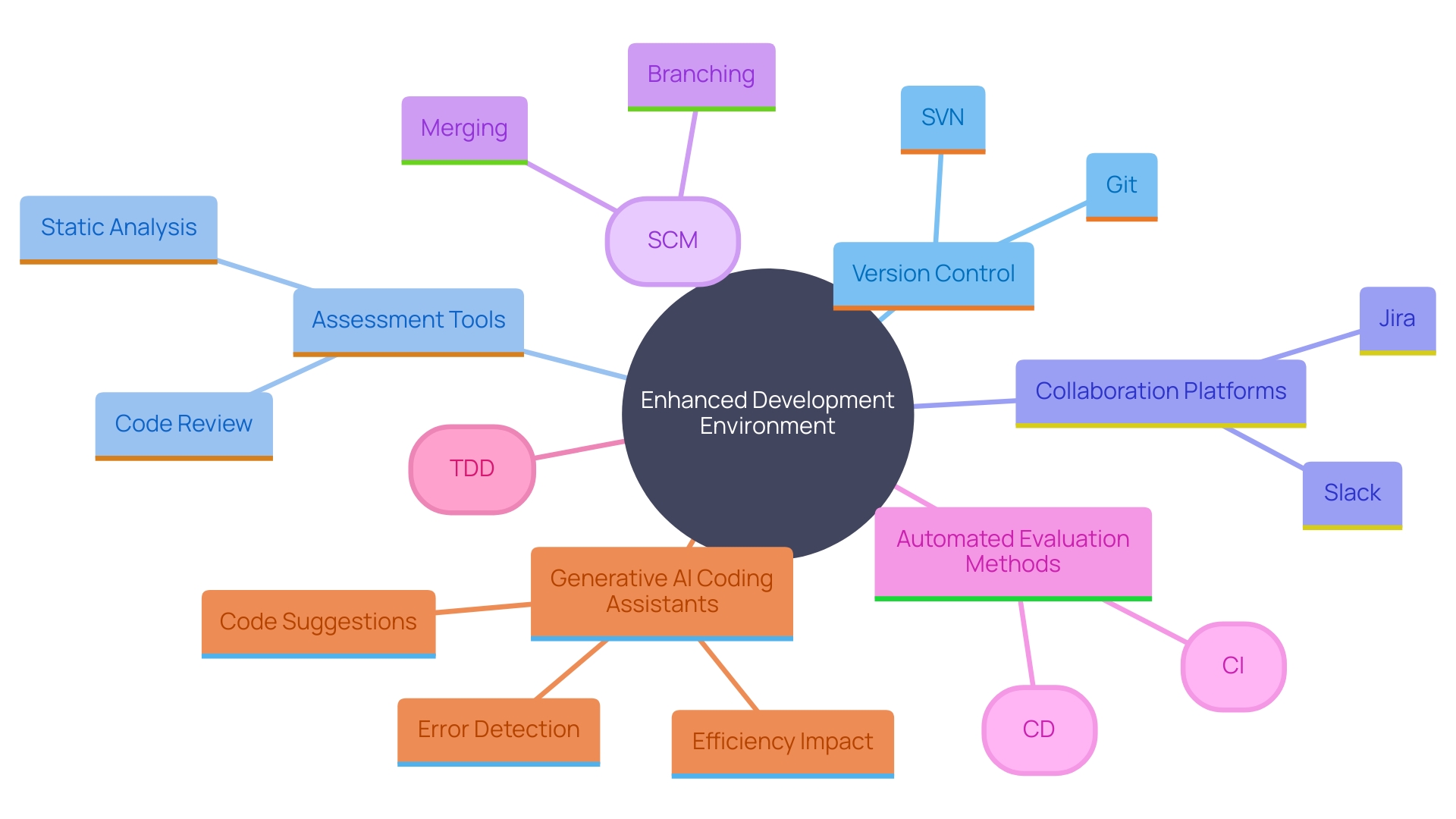
Testing and Launching Your eCommerce Web Application
Comprehensive evaluation is crucial prior to releasing your application to guarantee it operates as expected and delivers a smooth user interaction. Performance evaluation, in particular, is a critical step for e-commerce websites. It ensures that your site runs smoothly and loads quickly under all conditions, preventing potential interruptions such as slow page loads and transaction delays which could impact the customer experience. This proactive measure helps identify if the website can handle a sudden spike in traffic, such as during promotions or holiday seasons.
To effectively carry out performance evaluations, it's important to clearly define your objectives. Determine what you aim to measure, whether it's improving load times or increasing the number of concurrent users who can complete transactions without performance degradation. Choosing the appropriate tools, like LoadRunner, JMeter, or WebLOAD, is essential for fulfilling the necessary evaluation requirements.
Quality assurance (QA) evaluation is another indispensable aspect of the assessment process. QA testing involves a comprehensive evaluation of your website, identifying and rectifying errors, glitches, or shortcomings before the site goes live. This ongoing effort guarantees that your website is prepared for access, delivering a favorable interaction from the start.
'Julia Paulsen, Director of E-Commerce Nordics at Elkjop, emphasized the importance of a seamless customer journey, stating, “How can we enhance the seamless customer journey?' 'We are an omnichannel player – how are we going to take that to the next level with the customer at the center?' This approach highlights the necessity of thorough evaluation to align the in-store experience with the online one, fostering trust and satisfaction among users.
In summary, thorough evaluation, including performance and quality assurance assessments, is essential to the success of your e-commerce platform. 'It not only mitigates risks by identifying defects early in the development process but also ensures that your software meets the high expectations of today's sophisticated online shoppers.'.
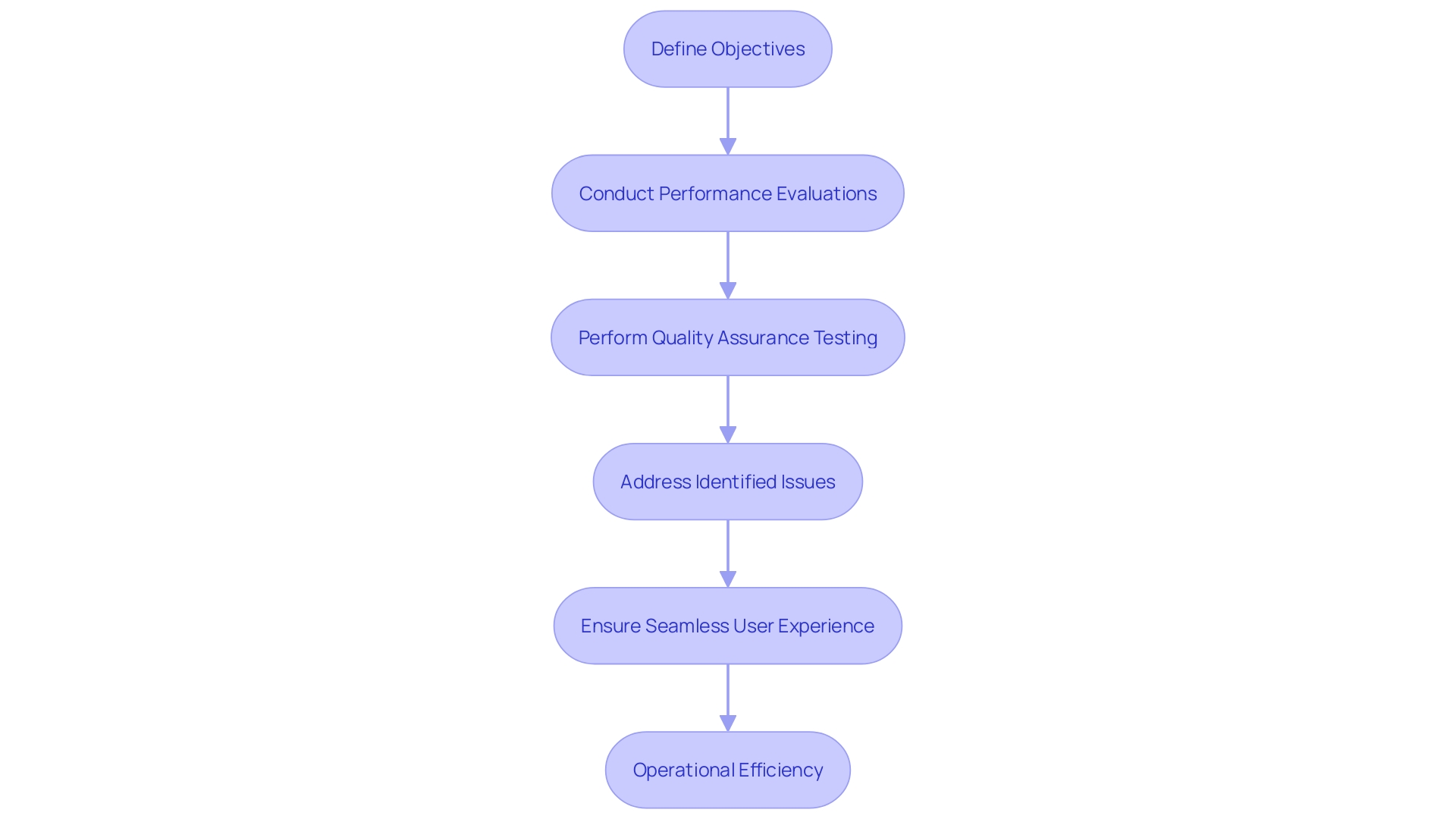
Testing for Performance, Security, and Scalability
To guarantee the strength and dependability of your e-commerce platform, performing comprehensive performance evaluations is essential. 'Performance evaluation includes different techniques focused on detecting and resolving bottlenecks, ultimately improving system stability and customer satisfaction.'. Load evaluation, for example, examines the program's behavior under anticipated traffic, aiding in identifying performance problems prior to the software launching. This form of evaluation guarantees that your software operates efficiently during both standard and maximum conditions.
'Security evaluation is essential for protecting individual data, identifying weaknesses, and implementing strong security measures to avert possible cyberattacks.'. This encourages confidence among individuals and safeguards the integrity of sensitive data managed by your software.
Scalability evaluation is essential for assessing if your software can manage expansion and rising traffic without a decline in performance. By understanding the upper limits of your system, you can ensure that your application remains efficient and reliable as your audience grows.
Integrating these evaluation methods not only improves the performance and security of your e-commerce platform but also guarantees a smooth and dependable interaction, which is essential for preserving customer satisfaction and trust.
Launching Your Application
Once testing is complete, it's crucial to prepare for a successful launch by developing an effective marketing strategy. Engage in activities that generate buzz and build anticipation for your app before it hits the market. Consider leveraging insights from early adopters to fine-tune your promotional efforts. For instance, Shake Shack's initial struggle with marketing their Cascara Shake underscored the importance of clear communication and targeted marketing.
To maximize the impact of your launch, focus on creating memorable experiences for potential customers. Just as Emmanuel Crouvisier found success by addressing a real-life problem with CardPointers, identify the unique value your app offers and highlight it in your marketing campaigns. Utilize data-driven approaches to craft compelling messages that resonate with your target audience.
After the launch, be prepared to receive and analyze feedback from individuals. This ongoing feedback cycle will assist you in making essential modifications and enhancements, ensuring lasting participant engagement. As seen with successful eCommerce platforms, ongoing optimization and adaptation are key to staying ahead in a competitive market. By addressing customer concerns and continuously enhancing your app, you can foster loyalty and drive long-term growth.
Maintenance and Continuous Improvement
Post-launch maintenance is crucial for ensuring your software's continued relevance and optimal performance. Regularly monitoring performance and user behavior is imperative to identify areas that need enhancement. For instance, Buffer has made significant strides in customer support, responding to 60% of customers within two hours and achieving a 91% satisfaction rate. This kind of customer-centric approach showcases the importance of continuous improvement. Similarly, Pinterest's success with a lean engineering team underscores the benefits of maintaining simplicity in your tech stack. By leveraging proven technologies and keeping systems straightforward, you can more easily manage and upgrade your software.
Utilizing a service-oriented architecture, especially a microservices approach, can further improve your system's scalability and flexibility. However, this method necessitates meticulous monitoring to preemptively address any issues, as offline evaluation of these services can be challenging. As emphasized by Rafal, an expert in scalable and resilient platforms, understanding your system's architecture and dependencies is vital for effective post-launch maintenance. Utilizing different performance evaluations, like load testing, stress testing, and endurance testing, can greatly enhance the dependability and experience of your software. By focusing on these strategies, you ensure that your application remains robust, efficient, and user-friendly long after its initial launch.
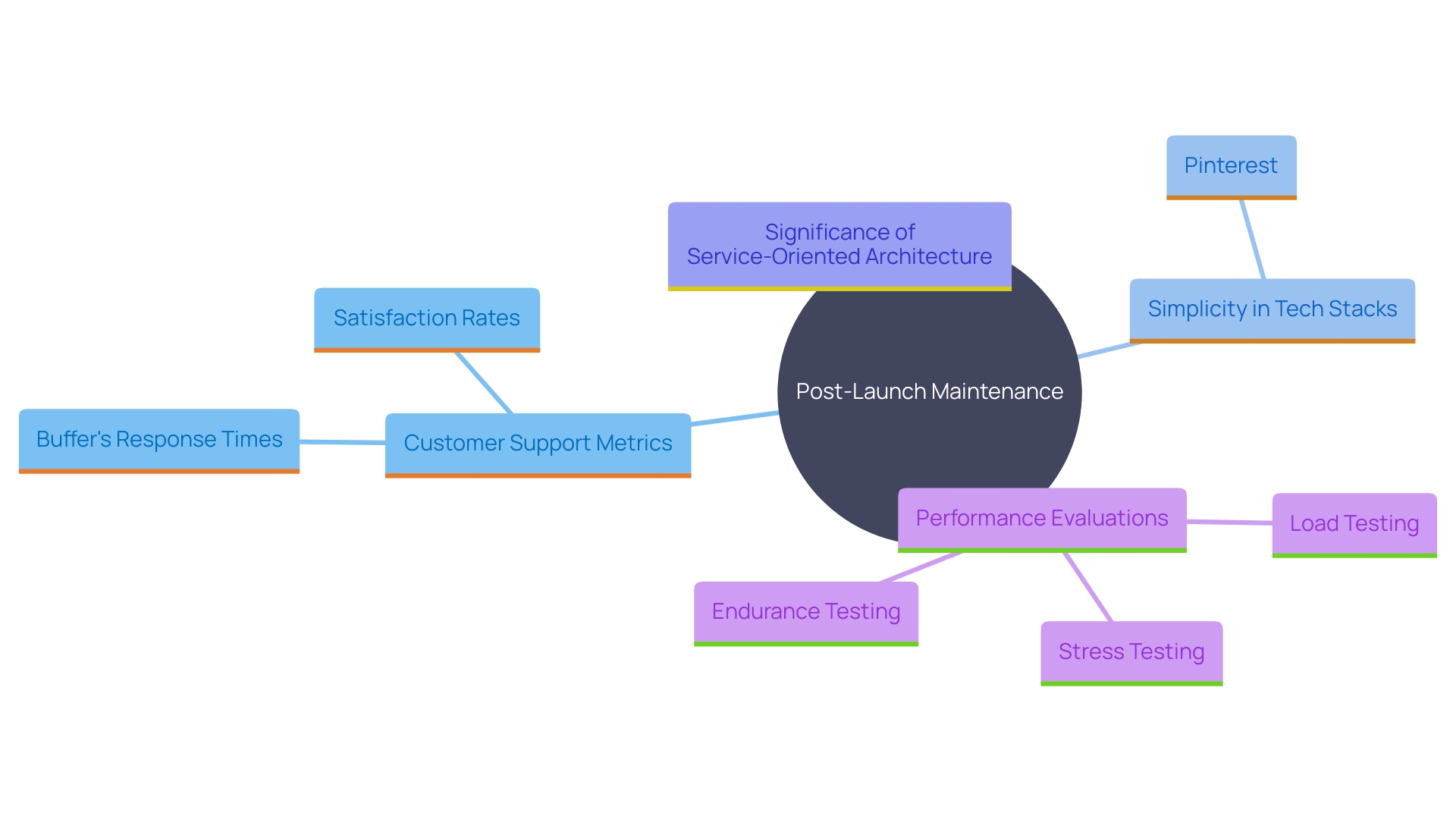
Regular Updates and Bug Fixes
Establishing a robust schedule for regular updates is crucial for maintaining the health and security of your e-commerce platform. Regular updates not only address bugs and improve features but also ensure compliance with the latest security standards. This practice is essential for preventing security vulnerabilities, as cybercriminals constantly seek weaknesses to exploit. As noted, applying software updates reduces risk by fixing security flaws, making it a prudent best practice.
In the tech industry, many companies have seen significant benefits from implementing regular updates. For example, Chess.com, which hosts over ten million chess games daily, has successfully broadened its audience to over 150 million by maintaining a stable and secure IT infrastructure. This stability is partly due to their commitment to regular software maintenance and updates, which help them provide a smooth interaction to individuals around the globe.
Moreover, the importance of regular updates is underscored by the IEEE, which highlights that software maintenance occupies over half of the total lifecycle costs. This investment is essential to maintain software functionality and fulfill client requirements over time. A comprehensive review of software maintenance practices reveals that consistent updates, including hot fixes, are vital for addressing time-critical issues and enhancing software performance.
In the case of the manufacturing execution system developed by Facile Technolab for the Australian medical manufacturing industry, regular updates were essential for ensuring compliance with stringent government tracking and auditing requirements. This approach not only solved specific business problems but also made the system easily customizable for future clients.
By following a timetable for consistent updates, your e-commerce platform can remain proactive against possible problems, offer an improved interaction, and uphold the confidence of your clients.
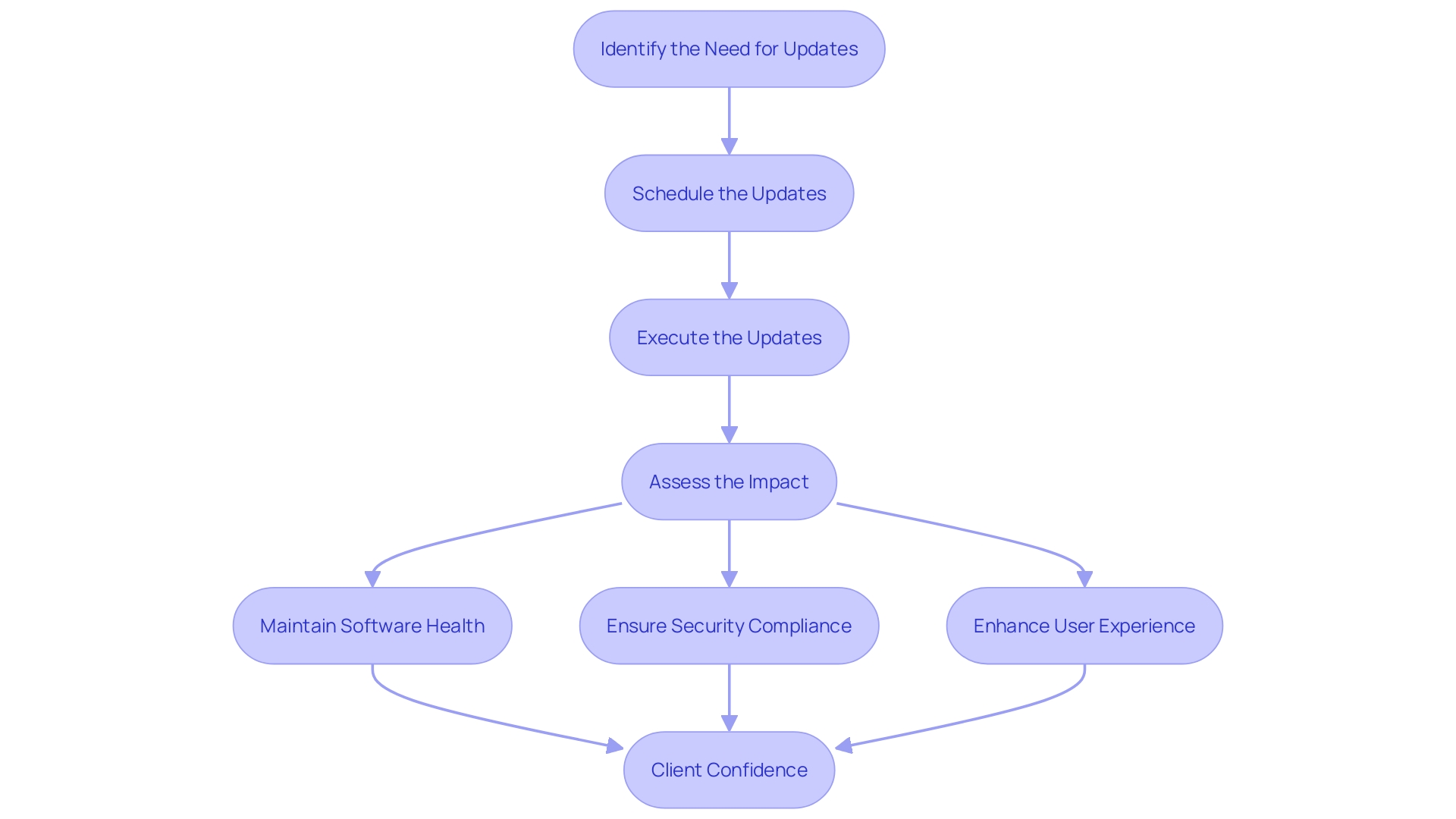
Collecting and Acting on User Feedback
Actively seeking feedback from individuals is crucial for understanding and enhancing experiences. Employ a variety of methods such as surveys and questionnaires, which are effective tools for gathering structured feedback. Create your surveys with clear, concise, and pertinent questions, employing scales such as the semantic differential scale to gauge opinions accurately. Online survey tools or email surveys can help you reach a broader audience, and offering incentives can increase participation rates.
Customer feedback goes beyond just collecting opinions; it encompasses insights and suggestions from individuals about your product or service. This feedback can be obtained through various channels, including interviews, social media interactions, and customer support queries. By analyzing this data, you can gain a deeper understanding of customer needs and preferences, which is essential for product development and enhancement.
The demand for participant research has expanded considerably, with 62% of respondents in the Future of Participant Research survey indicating an increase in the past 12 months. This trend is driven by the need to mitigate risks and make informed decisions. As Emma Craig, Head of UX Research at Miro, noted, there is a shift towards more risk-averse attitudes, emphasizing the importance of 'getting it right' the first time.
A UX audit is a systematic evaluation of the interactions of a product, website, or application. This process, which usually takes 10 to 20 days, involves analyzing usability, accessibility, design, content, and overall satisfaction of individuals. The audit produces a prioritized list of client interaction problems that can direct upcoming modifications and improvements. Aligning your product with customer insights and best practices not only enhances satisfaction but also offers a competitive edge.
Consider the case of BeeOdiversity, which faced challenges in scaling their app while maintaining an excellent experience for individuals. By incorporating feedback from individuals and conducting thorough research, they were able to introduce new functionalities and scale effectively, resulting in significant growth and success.
In summary, integrating user feedback and conducting thorough user research are essential strategies for enhancing your product, ensuring it meets user expectations, and maintaining a competitive edge in the market.
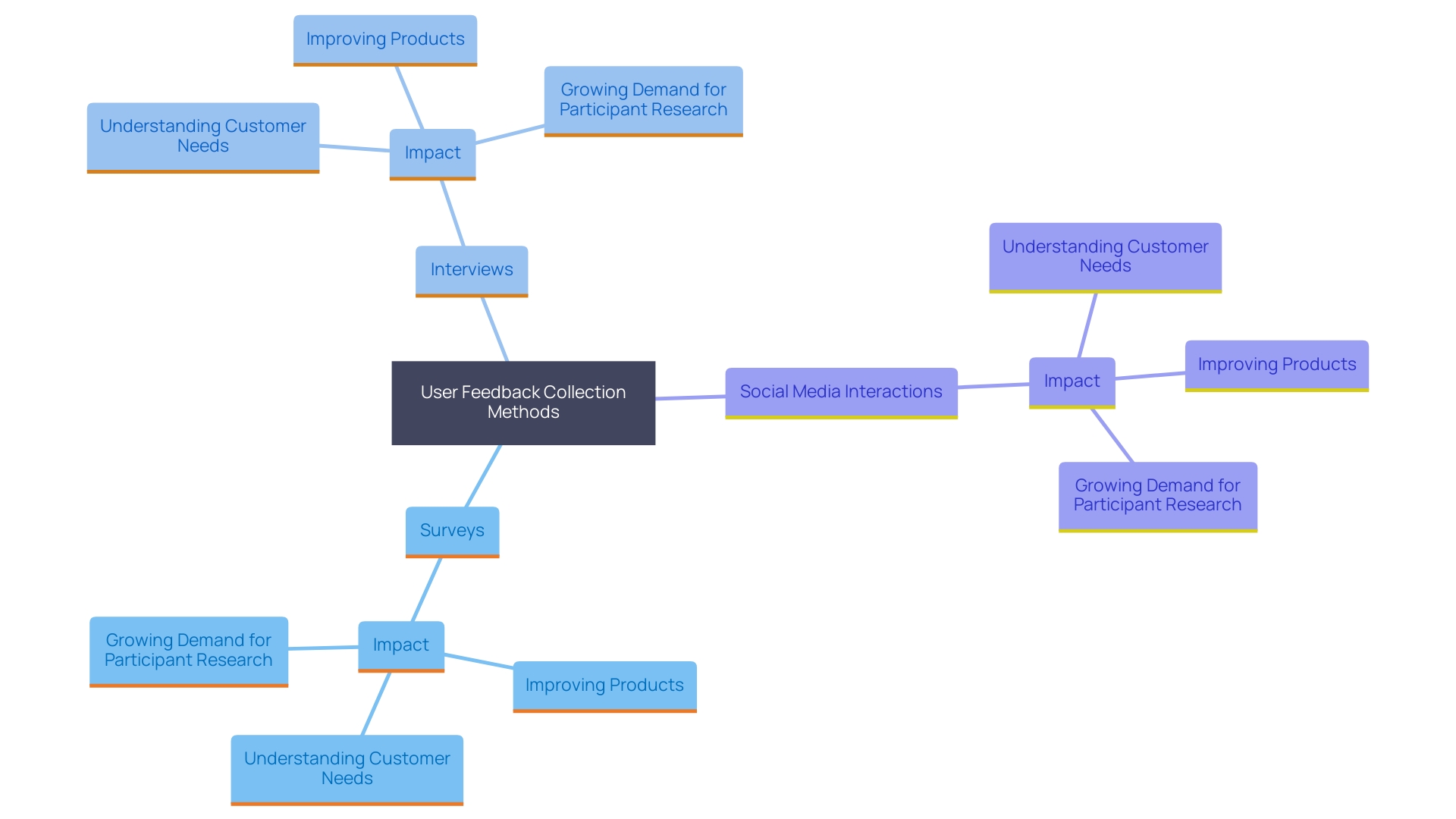
Conclusion
The development of an eCommerce web application is a multifaceted endeavor that offers significant advantages for businesses in today's digital landscape. By enhancing accessibility and customer experience, companies can expand their reach to a global audience and provide continuous service. The integration of data analytics allows retailers to gain valuable insights into consumer behavior, enabling tailored strategies that reduce customer churn and improve retention rates.
Effective planning is critical, as it lays the groundwork for a successful application. By defining goals, understanding the target audience, and selecting the appropriate technology stack, businesses can create user-friendly interfaces that drive engagement. Rigorous testing and ongoing maintenance ensure that the application remains secure, reliable, and capable of adapting to market demands.
Choosing the right eCommerce platform is essential for scalability and functionality. Whether opting for Shopify, Magento, or WooCommerce, the decision should align with the business model and growth objectives. A well-designed application not only attracts customers but also fosters loyalty through a seamless shopping experience.
In conclusion, investing in the development of an eCommerce web application is a strategic move that empowers businesses to thrive in a competitive environment. By leveraging advanced technologies, adhering to best practices in design and user experience, and committing to continuous improvement, organizations can enhance customer satisfaction and drive sustainable growth.





